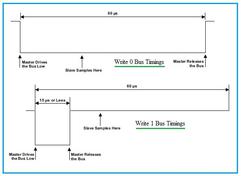I2C vs I2S: Key Differences Explained
Advertisement
I2C (Inter-Integrated Circuit) and I2S (Inter-IC Sound) are both serial communication protocols, but they serve distinct purposes and operate differently. This article clarifies the basic differences between I2C and I2S interfaces.
I2C (Inter-IC Bus)

I2C interface diagram
- I2C stands for “inter-IC bus.” For simplicity, it’s commonly referred to as I2C.
- It’s a low speed, two wire serial data connection bus used within integrated circuits (ICs).
- I2C facilitates communication between ICs, typically those mounted on the same printed circuit board (PCB).
- It employs just two lines for communication between multiple masters and multiple slaves: SDA (Serial Data) and SCL (Serial Clock).
- I2C supports a range of data rates, depending on the version, from 100 Kbps, 400 Kbps, 1 Mbps, up to 3.4 Mbps.
- Like SPI, I2C is a synchronous communication protocol, unlike UART. This means there’s a shared clock signal between masters and slaves.
- I2C utilizes start and stop bits, along with an ACK (acknowledgement) bit for every 8 bits of data transferred.
I2S (Inter-IC Sound)

I2S configurations
- I2S stands for Inter-IC Sound. It’s often simplified to I2S.
- I2S is specifically designed for connecting digital audio devices. It functions as an electrical bus interface standard.
- When implemented, the I2S bus separates data and clock signals, which results in a connection with very low jitter.
- The I2S bus comprises the following three lines:
- A word-select line (WS)
- A clock line (SCK)
- A multiplexed serial data line (SD)
- The word select line indicates which channel is currently being transmitted:
- WS = 0 channel 1 (left)
- WS = 1 channel 2 (right)

I2S interface timing
- Serial data is transmitted in two’s complement format, with the most significant bit (MSB) sent first.
Summary
I2C is a general purpose, low speed interface primarily used for communication between microcontrollers and peripheral devices like sensors and EEPROMs. In contrast, I2S is specifically designed for transmitting digital audio data between devices such as digital to analog converters (DACs) and audio processors. Unlike I2C, I2S does not include device addressing or control signaling; it focuses solely on audio data transmission. Understanding these differences is crucial for selecting the appropriate protocol in system design, ensuring compatibility and optimal performance based on the application’s specific requirements.
Advertisement
 RF
RF








